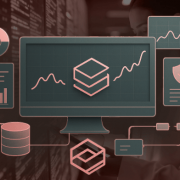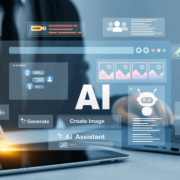Natural Language Processing (NLP) helps computers understand informal human language as it is typed or spoken out. The latest innovations in NLP technology are revolutionising human-machine interactions. For decades, all data and analytics users have been looking for easier ways to interact with data and present insights in a simpler manner. As computers get better at understanding natural human language, analytics applications can leverage this capability to instantly connect decision makers with the right business data. Search and AI-driven analytics provides a google-like experience on top of data, thus making the use of analytics tools as easy as having a conversation with a virtual assistant or a modern search interface.
Gartner’s* data and analytics trends signifies the importance of Natural Language Processing (NLP) by including it amongst the top 10 data and analytics technology trends.
Below are the top six motivations for organizations to adopt Search and AI-driven Analytics along with traditional Business Intelligence (BI) dashboards and reports. These motivations are based on experiences from multiple customer success stories across industries and observations from numerous use cases at various stages of data maturity.
- Improve data and analytics adoption: As global organizations focus their efforts on democratizing analytics for everyone, it is observed that most of the data initiatives are unsuccessful due to low analytics adoption and usage rates. High complexity of analytics tools and platforms used by most business teams is the primary factor for organizations failing in their efforts to be data driven. To overcome this, organizations are required to spend significant efforts on training and change management to enable users with the right skills.NLP features offer simplicity of use and significantly reduces or eliminates training efforts. With the increasing use on NLP, most of the analytics queries will be generated by NLP search/voice or will be automatically generated by the analytics tool. This boost’s analytics and BI adoption from 35% to over 50% for all employees and business users. It also enables businesses to deliver analytics anywhere and to everyone in the organization, with less needed skills, and reduced interpretation bias than current manual processes.
- Reduce time to actionable insights: Swift decision-making in uncertain business scenario is another challenge where NLP techniques are helping in providing automated vital insights and predictions on-the-fly. Businesses can be better equipped to predict, prepare, and respond in a proactive accelerated manner.
- Extract value from untapped data sources: Around 80% of enterprise information is either unstructured or ignored by business teams. NLP combined with AI helps to derive value out of untapped and unstructured information assets like text, voice, video and images for enhanced insight discovery, reduced costs, and inefficiencies inherent to manual data collection and data entry.
- Enable frontline users with embedded operational insights: NLP provides users with dynamic data stories with more automated, intelligent, and customized experiences, compared to dashboards which provide point-and-click authoring and exploration. Implementation of NLP allows streaming of in-context ad-hoc analysis which provides the most relevant insights to each user based on their context, role, or use.
- Empower executive users with innovative features: Due to time constraints, business leaders and executives normally do not get the opportunity to deep-dive into dashboards. NLP allows users to analyze data and provide important summaries which can be delivered in the form of a newsletter, or a short voice note (quick narrative). Conversational features can also help to answer further questions by the users and provide a 360-degree view on request.
- Rationalize BI workload: There is a constant increase in total cost of ownership for running and maintaining Data and Analytics systems. With adoption of NLP, typically 50-60% of current BI workload (comprising of static reports and canned dashboards) can be consolidated and redirected to NLP features and voice guided applications. This can help significantly reduce several operational, infrastructure and staff costs, and accelerate democratized analysis of complex data.
Are you wondering what NLP use cases can add value to your organization?
Infocepts specializes in identifying the right use cases for search-driven analytics and implementing them using industry leading tools.
Get in touch to know more!
References
* Gartner Article: ‘Gartner Top 10 Trends in Data and Analytics for 2020’, by Laurence Goasduff, 19 October 2020 – https://www.gartner.com/smarterwithgartner/gartner-top-10-trends-in-data-and-analytics-for-2020
Recent Blogs

Beyond the Store: How Spatial AI Is Redefining Retail Operations
December 24, 2025

Extending Databricks Observability for Trusted, Confident Lakehouse Operations
December 23, 2025

AI-Powered Retail: 2025’s Biggest Advances and the Trends Poised to Shape 2026
November 18, 2025

Redefining Enterprise AI: The Power of Multimodal GenAI in an Agentic Era
October 30, 2025


